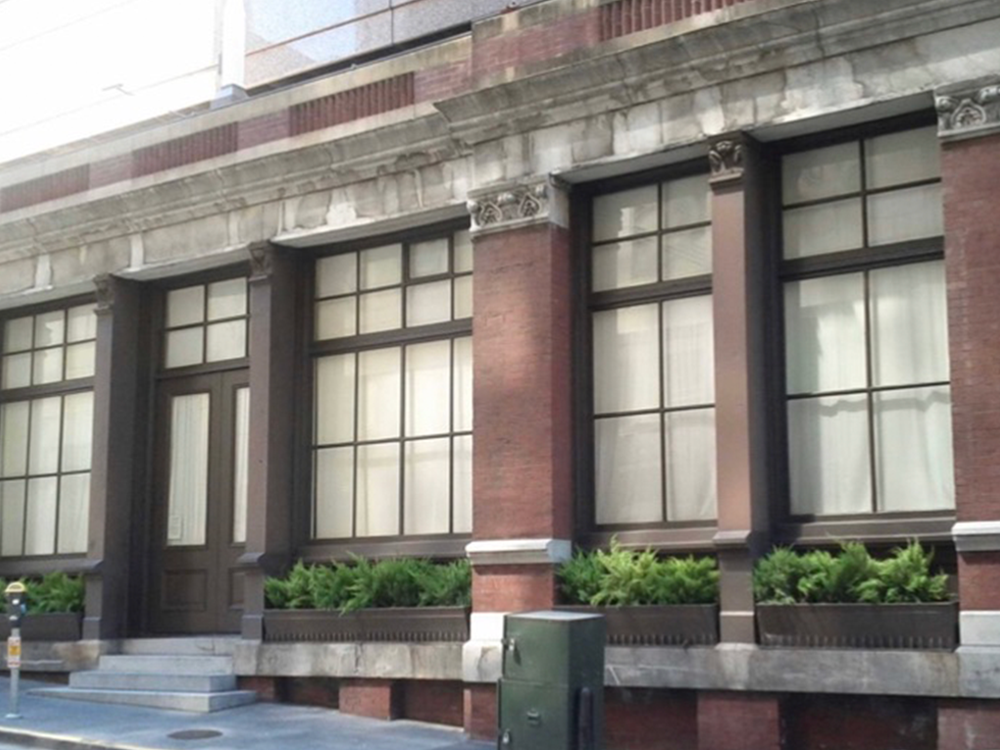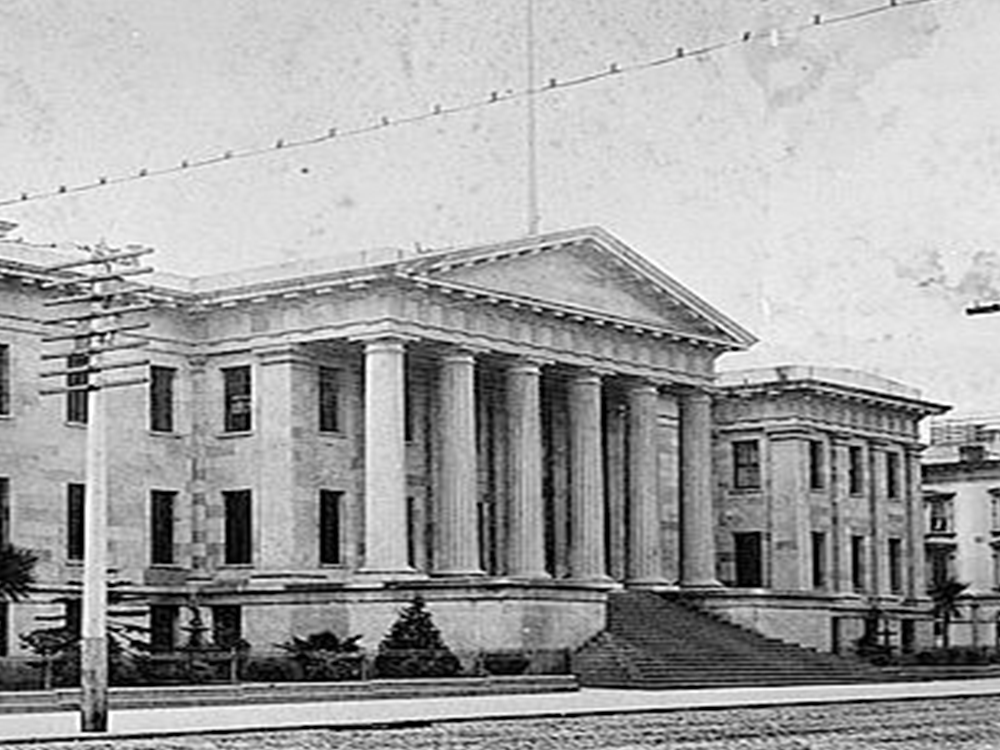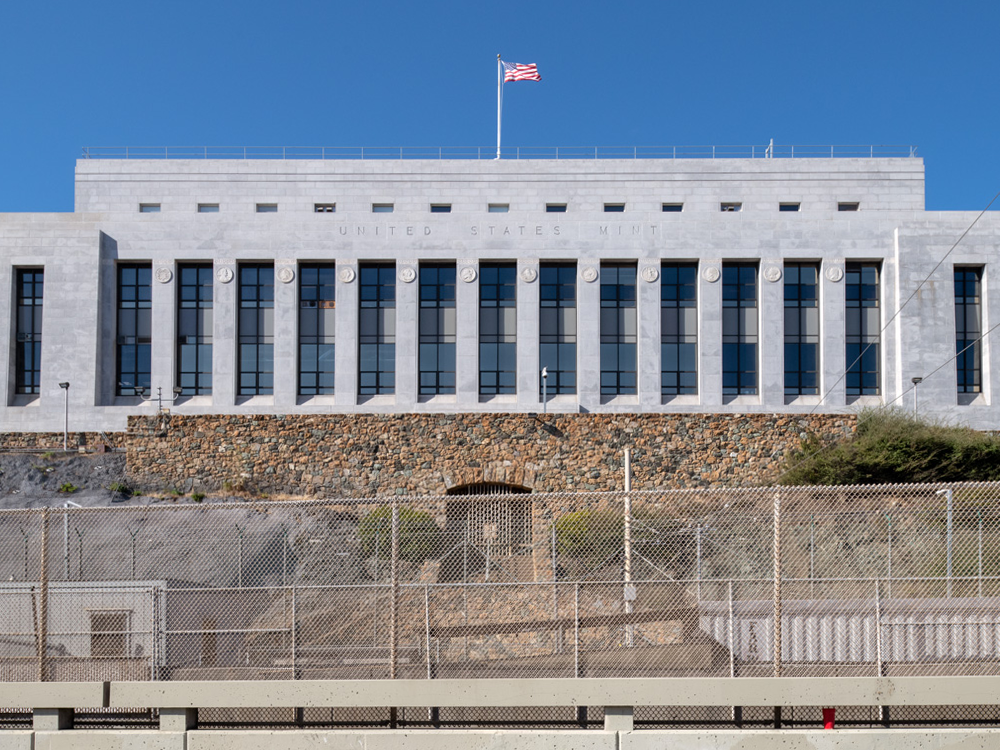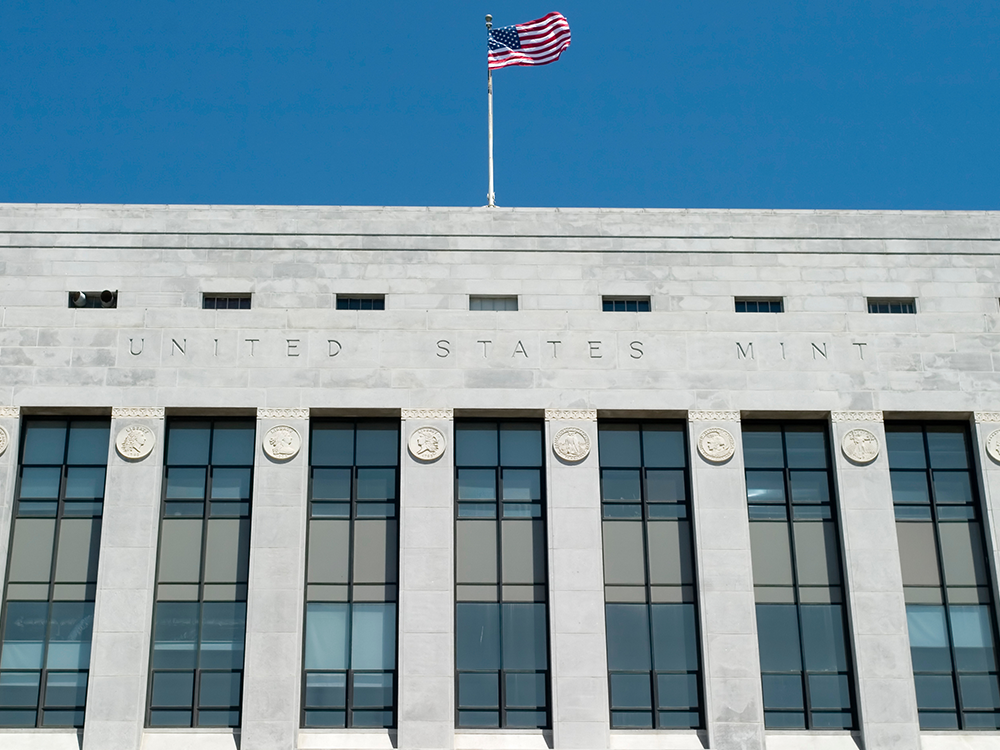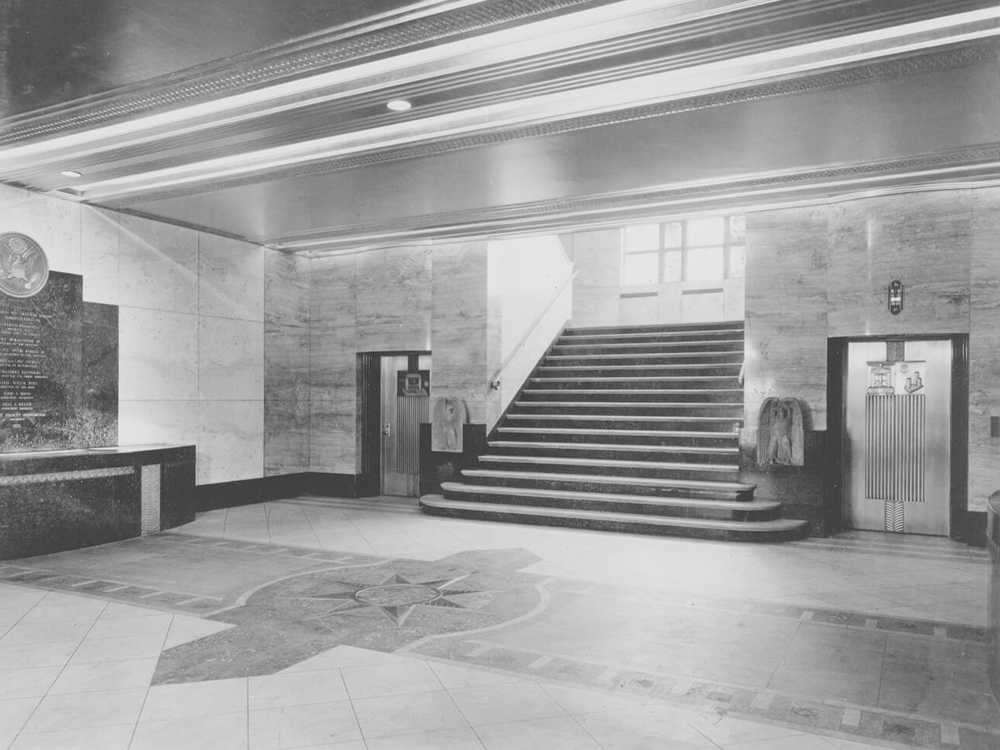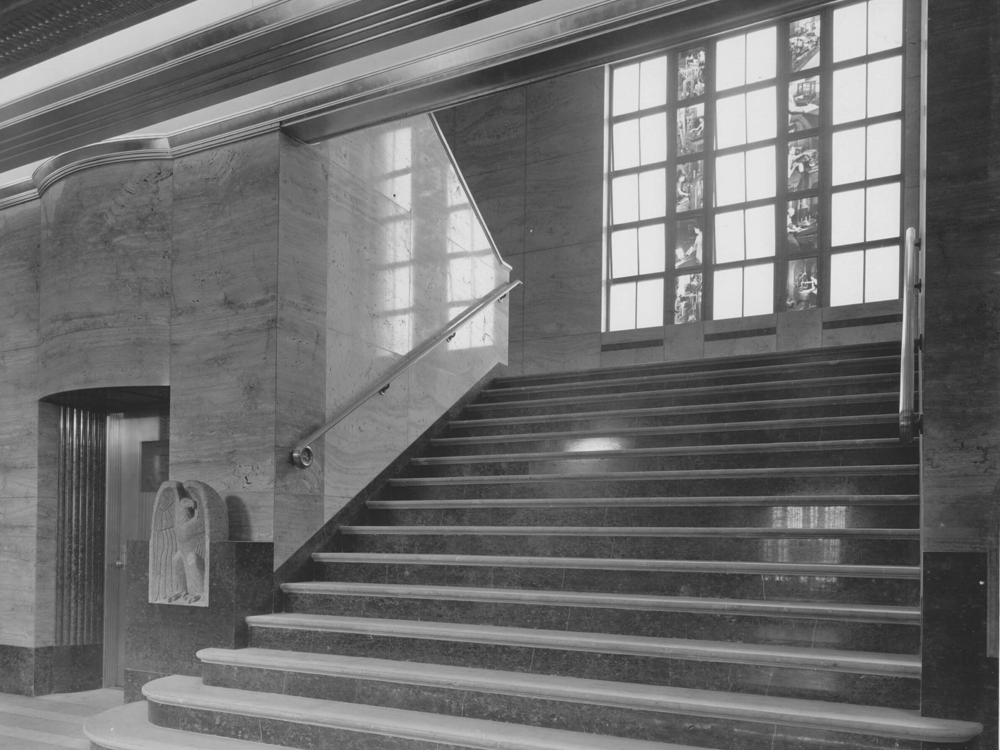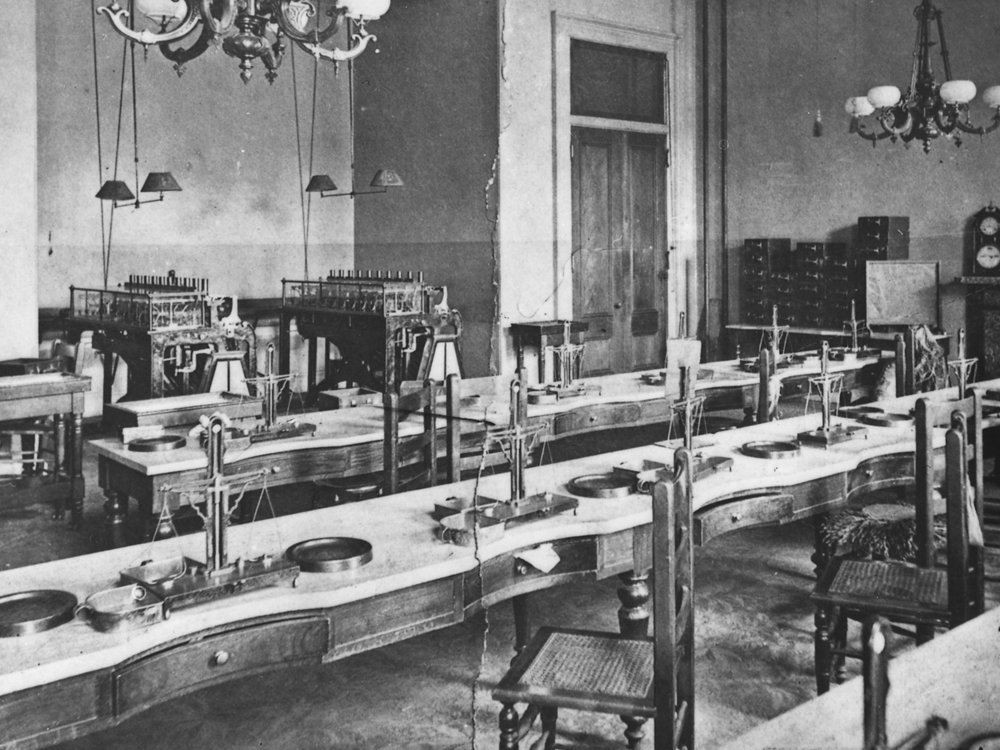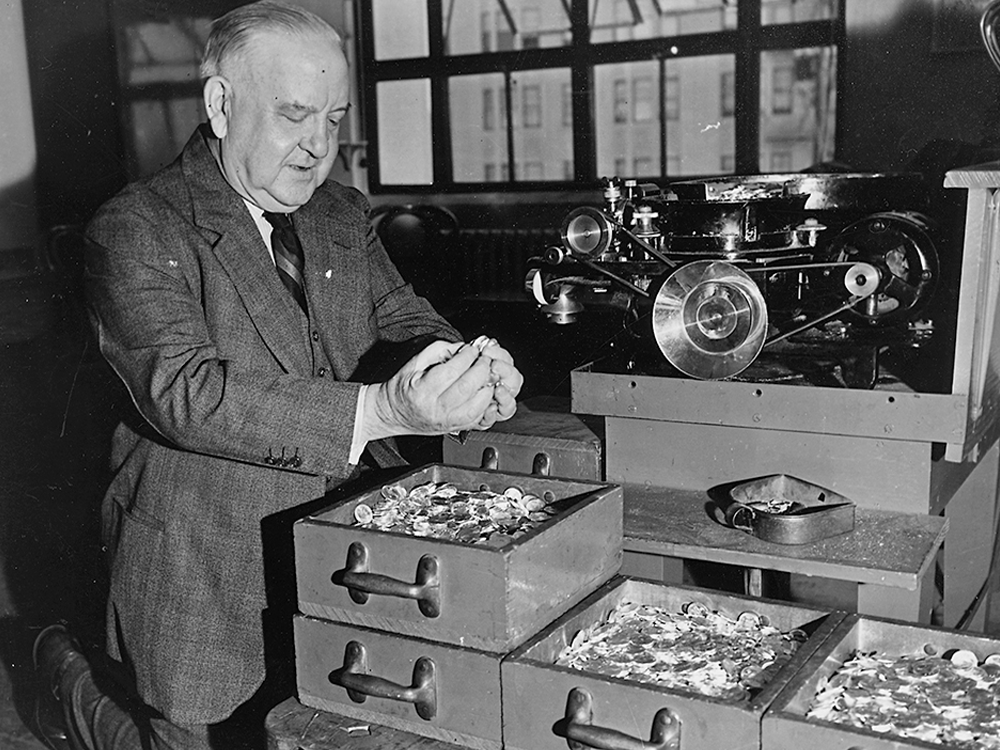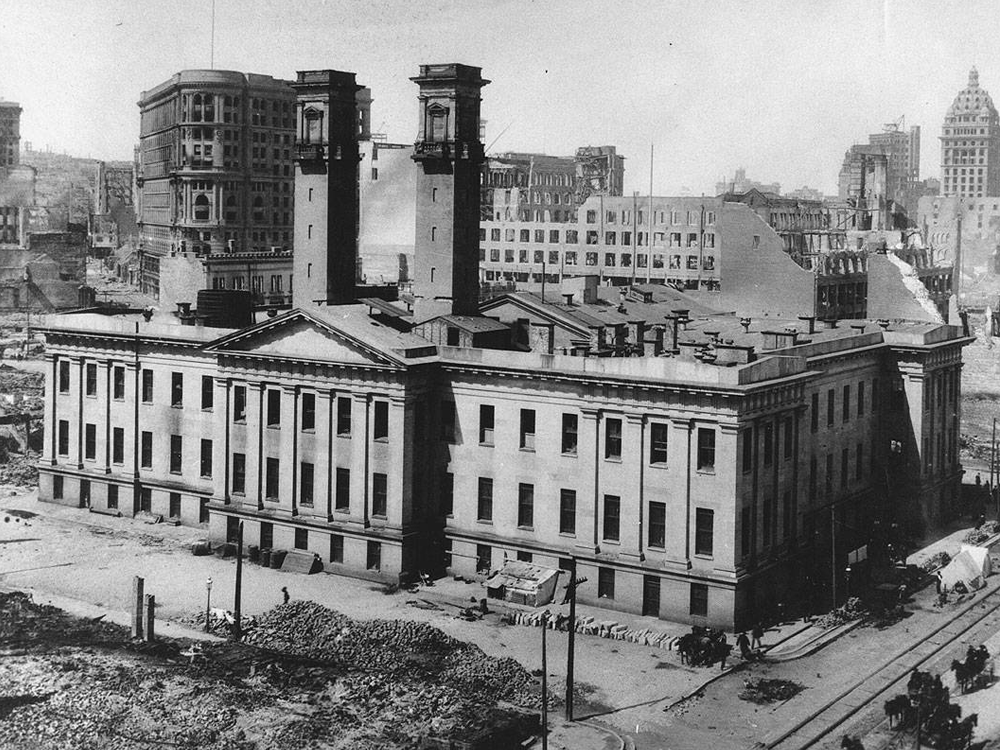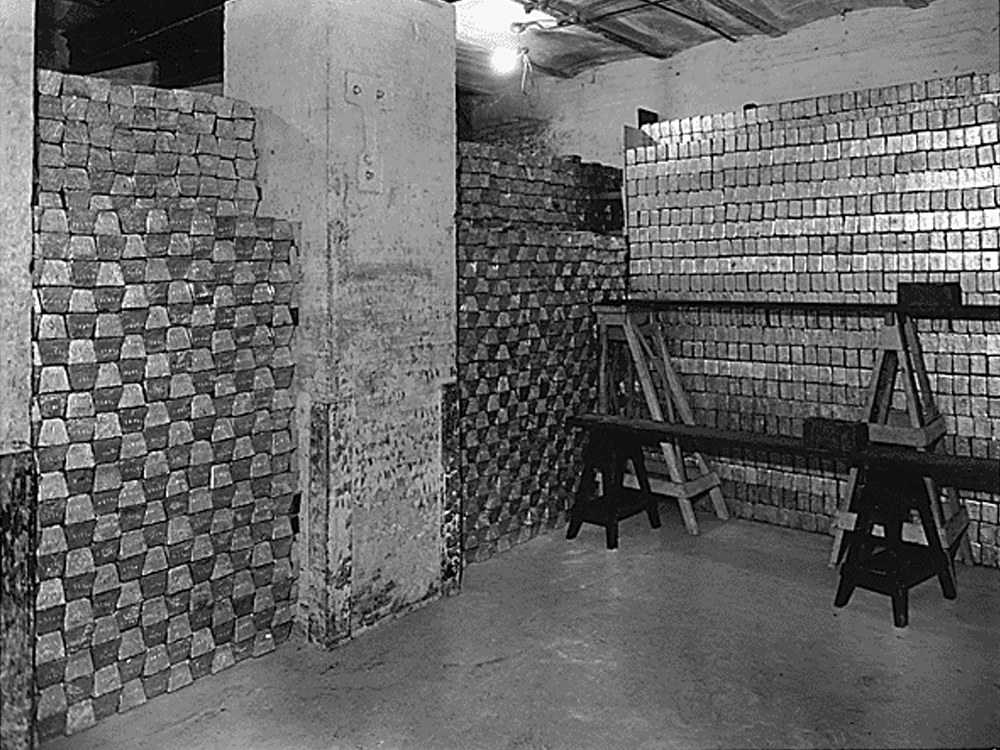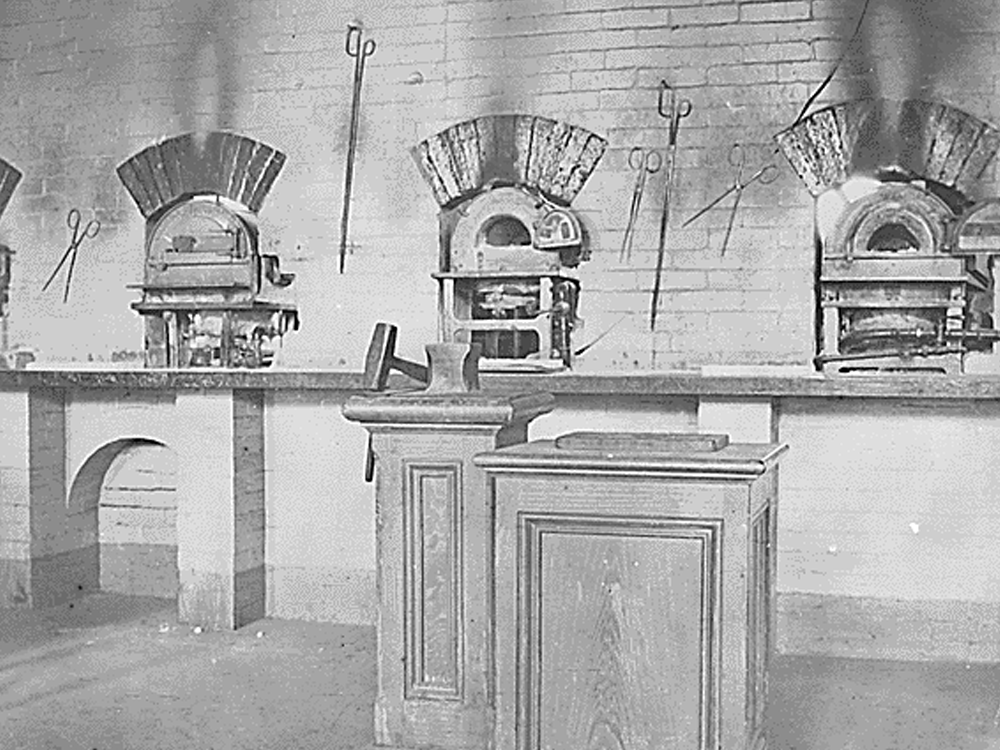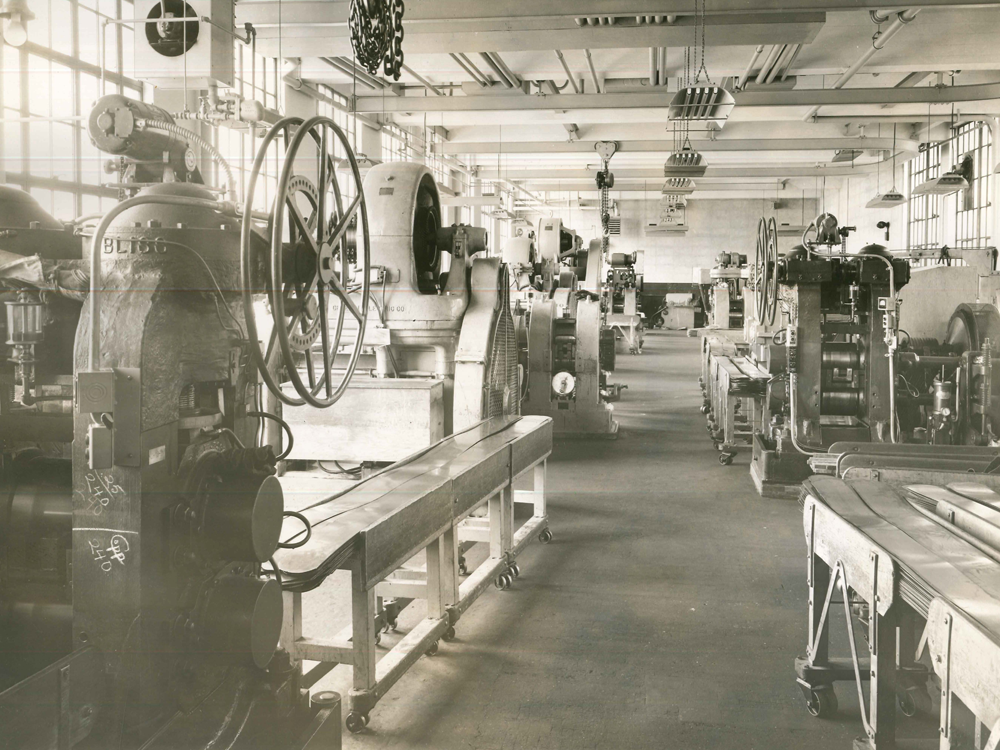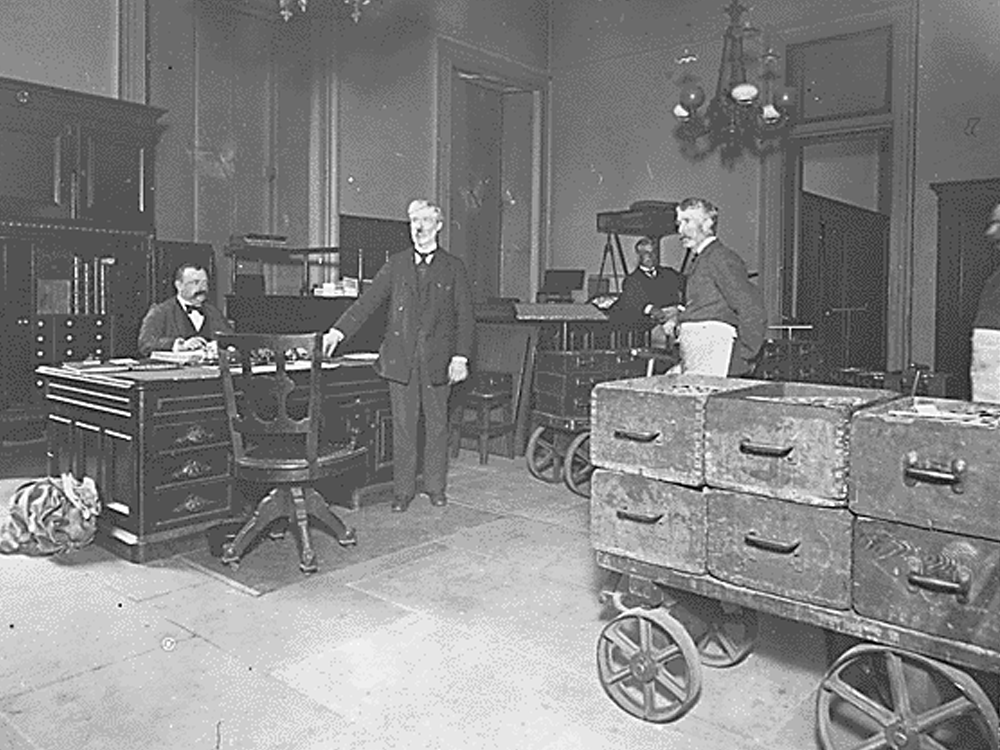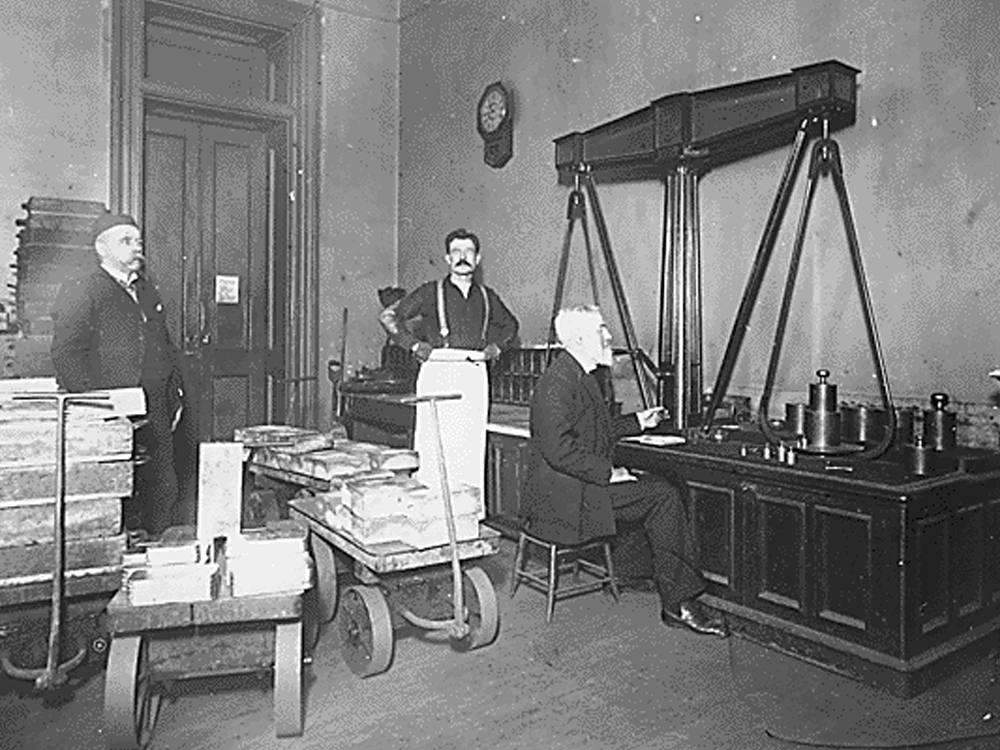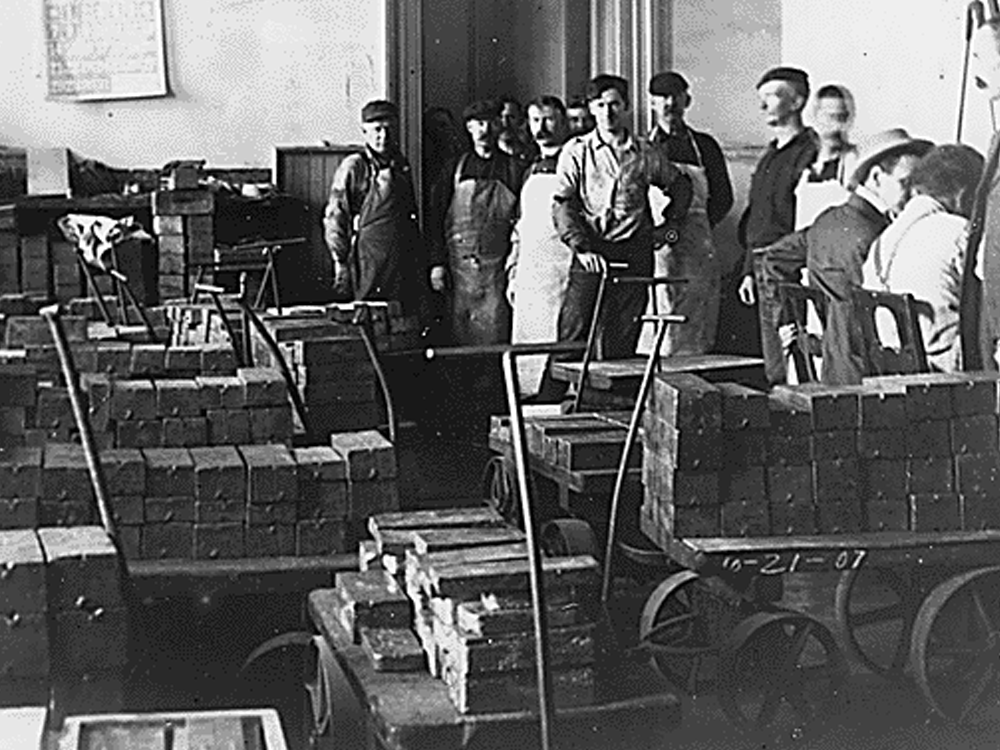Following the discovery of gold by James W. Marshall at Sutter’s Mill in 1848, a rush ensued bringing thousands of hopeful prospectors to the state of California in search of their fortunes. The vast quantities of gold found there over the next several years presented a problem. Transporting it to the East for refining and possible eventual coining was slow, expensive and highly risky due to the potential for robbery.
Consequently, a number of private firms emerged such as Moffat & Co., Wass Molitor & Co., Kellogg & Co., and perhaps a dozen others who refined and converted the raw gold into coins or bars. During 1851-52, the Moffat operation became an official U.S. Assay office under the direction of Augustus Humbert, but it was evident that what was needed was a full minting facility in the area.
In 1854, the first San Francisco Mint began operations at 608 Commercial Street in the heart of downtown just north of Belden Place. In that first year, only gold coins were struck (the $1, $2.50, $5, $10 and $20 denominations) but only very tiny quantities of the quarter and half eagle were made making the 1854-S of those two denominations among the rarest and most valuable coins in the entire field of U.S. numismatics. Coinage of silver quarter and half dollars began the next year, followed later in the decade by dimes and dollars. The loss of the S.S. Central America in a hurricane off the Carolina coast in 1857 actually preserved a number of double eagles dated 1856 and 1857 from the San Francisco mint, making these previously scarce coins relatively widely available today in high Mint State grades.
Another group of legendary rarities concern the 1870 output from San Francisco. No mint records exist, yet a single example of both the half dime and three-dollar gold piece exist. Only about a dozen dollars dated 1870-S are known, and there is even speculation about the existence of an 1870-S quarter, though none have been seen as of yet. And yet one more enigmatic rarity is found from this storied mint – the 1894-S dime. With an official mintage of only 24 pieces, that coin along with the 1804 silver dollar and the 1913 Liberty nickel comprised three of the most famous numismatic rarities of the mid-20th century.
With the shortage of specie coin during the Civil War, the nation’s need for additional silver and gold coinage during Reconstruction was acute, and construction of a new facility for the San Francisco mint began in 1869 and was ready for operations in 1874. Located at 5th St. and Mission, it was only about a mile from the old location. The building gained the nickname “The Granite Lady” for having been one of the few edifices to survive the devastating earthquake that destroyed most of the city in 1906. In 2006, the “Granite Lady” was honored on the centennial of the 1906 quake with a commemorative silver dollar (bearing the reverse of the Morgan dollar) and a $5 gold piece (bearing the reverse of the $5.00 Liberty).
During the early 1880s, the mint struck tremendous quantities of Morgan silver dollars, as well as a substantial number of gold coins. Very few minor silver pieces were made, as nearly all the silver was devoted to dollar coinage. By the late 1880s and 1890s, production of dollars slackened, and some very rare dates (1892-S and 1893-S, particularly in Mint State) are well known to collectors today. The San Francisco Mint also has the distinction of being the first mint outside Philadelphia to strike copper coinage (1908 Indian Cent) and nickel coinage (1912 Liberty Nickel). In 1909, just under half a million Lincoln Cents with the “VDB” initials on the reverse were made in San Francisco, creating another very well-known rarity.
By the mid-1930s, the need for yet a larger facility was felt, and in 1937, the third (and current) San Francisco mint was opened at 155 Hermann Street. Coinage was suspended at the end of 1955 for thirteen years, but in 1968, production began again with proof coinage, the first to be made outside Philadelphia, as well circulating coinage through 1974. Since 1975, with a few exceptions, most of the output of the San Francisco Mint has been oriented towards coins and sets made for the collector market. Up through 1988, the facility was officially an Assay Office, but at the end of March, 1988, it was again granted full Mint status.
